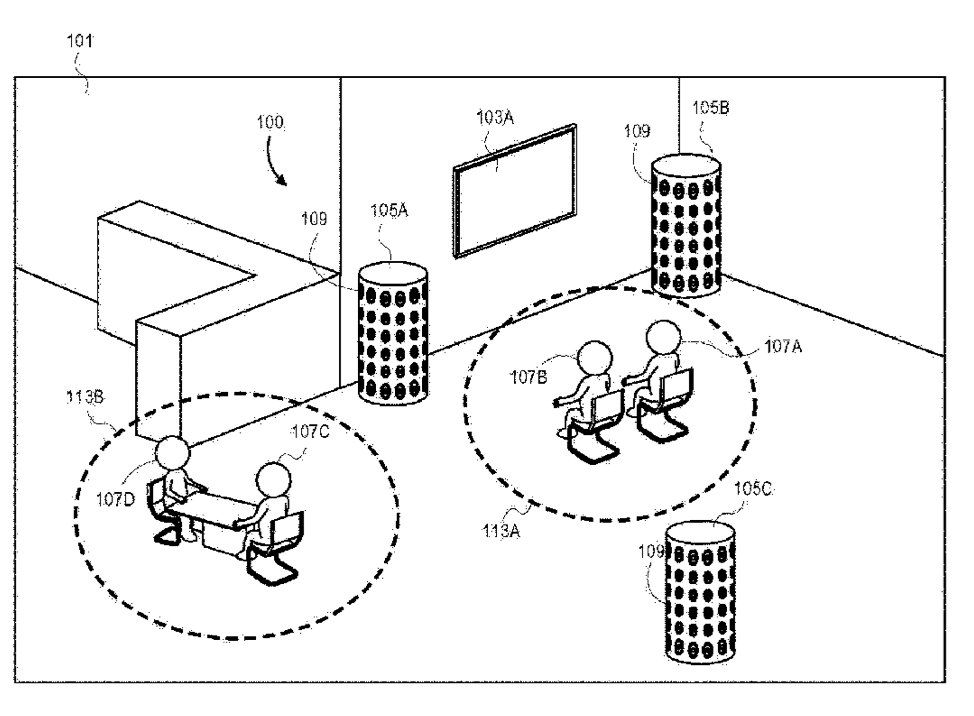Apple has been granted a patent for an “audio system with configurable zones” that hints at future features for paired HomePods in, among other things, a home theater set-up.
In the patent data, the tech giant notes that speaker arrays may reproduce pieces of sound program content to a user through the use of one or more audio beams. For example, a set of speaker arrays may reproduce front left, front center, and front right channels for a piece of sound program content (e.g., a musical composition or an audio track for a movie).

However, Apple says that though speaker arrays provide a wide degree of customization through the production of audio beams, conventional speaker array systems must be manually configured each time a new speaker array is added to the system, a speaker array is moved within a listening environment/area, an audio source is added/changed, or any other change is made to the listening environment. Apple says that this requirement for manual configuration may be burdensome and inconvenient as the listening environment continually changes (e.g., speaker arrays are added to a listening environment or are moved to new locations within the listening environment).
What’s more, the tech giant says that these conventional systems are limited to playback of a single piece of sound program content through the single set of speaker arrays. Apple wants to change this — and, of course, spur sales of the HomePod.
Here’s the summary of the invention: “An audio system is described that includes one or more speaker arrays that emit sound corresponding to one or more pieces of sound program content into associated zones within a listening area. Using parameters of the audio system (e.g., locations of the speaker arrays and the audio sources), the zones, the users, the pieces of sound program content, and the listening area, one or more beam pattern attributes may be generated.
“The beam pattern attributes define a set of beams that are used to generate audio beams for channels of sound program content to be played in each zone. The beam pattern attributes may be updated as changes are detected within the listening environment. By adapting to these changing conditions, the audio system is capable of reproducing sound that accurately represents each piece of sound program content in various zones.”
